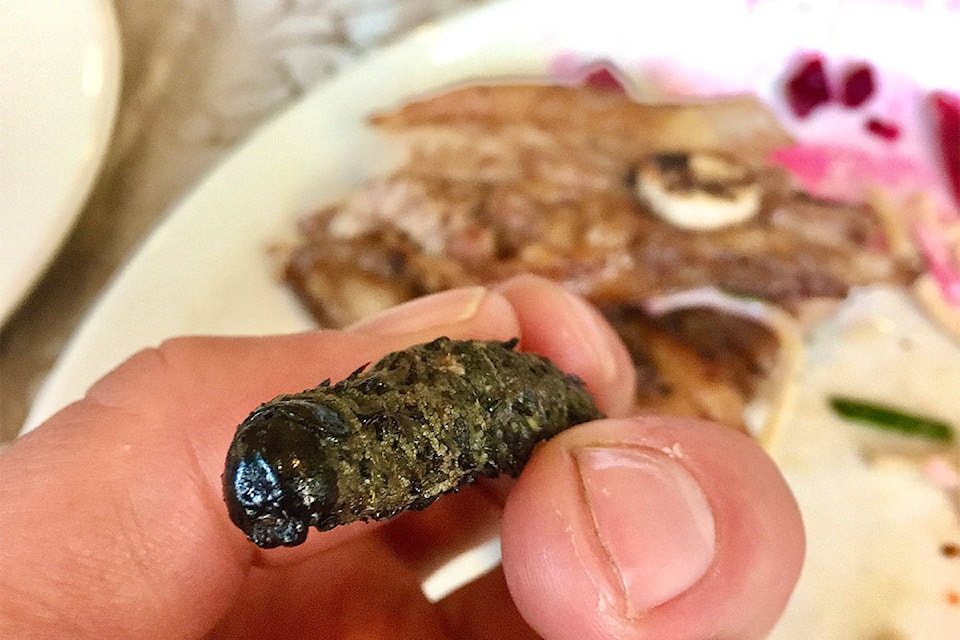As an avid amateur cook, I’m always looking to try something new.
The other day in the grocery store, I saw cricket powder. Now, when I’ve seen crickets on a hike, never once have I thought to myself, “Oh that looks good. I wonder how it pairs with chocolate and orange?”
Apparently the powder is high in protein and most often used in shakes. Entomophagy is the name given for eating insects. While uncommon in Canada, people around the world consume more than 1,900 different species of the creepy crawlers, according to the Food and Agriculture Organization of the United Nations.
The most commonly consumed are beetles, caterpillars, bees, wasps and ants.
When I was in Zimbabwe a few years ago – when traveling was a thing – I ate mopane worms (which are actually caterpillars) at a fancy restaurant. They were dry and crunchy, like a potato chip. However, still a giant leap behind Miss Vickie’s.
| At a restaurant in Zimbabwe. Oh. Um. Perhaps I’ll go check out the dessert table. (Liam Harrap - Revelstoke Review) |
While many people might shudder at the thought of tomato and oregano cricket biscuits and chocolate covered ants, it’s likely we’ve all unknowingly eaten insects.
The Canadian Food Inspection Agency has guidelines for how many mites, maggots, mould and even rodent hairs can be in food items. There are policies that state our food is safe, until insects and filth reach certain levels.
In chocolate, there can be no more than 1/100 of a gram of rodent hair.
Cheese cannot contain more than five dead mites per 2.5 centimetre square and to a depth of 0.6 centimetres. Live mites are not permitted.
Mushrooms can’t have more than 10 maggots per 100 grams. Nor can rice have more than 25 insect fragments per 100 grams.
Oh. Dear.
The Food and Drug Administration (FDA) says on its website that it’s “economically impractical to grow, harvest, or process raw products that are totally free of non-hazardous, naturally occurring, unavoidable defects.”
Our world is crawling, so it only makes sense that some of it gets into our cheese platters and fondues.
In an effort to reduce greenhouse gases, many experts claim our society needs to start embracing the idea of eating insects.
Insects can be easily farmed with much fewer resources and in most cases, are quite healthy. Of course, the biggest hurdle is the yuck factor.
But if we’re already unsuspectingly eating them, perhaps the transition should be easy.
I still haven’t bought the cricket powder. But each time I come across it at the end of the grocery aisle, I pause. Eventually, curiosity will win. I think.
Do you have something to add to this story, or something else we should report on? Email:
liam.harrap@revelstokereview.com
@pointypeak701
liam.harrap@revelstokereview.com
Like us on Facebook and follow us on Twitter.
